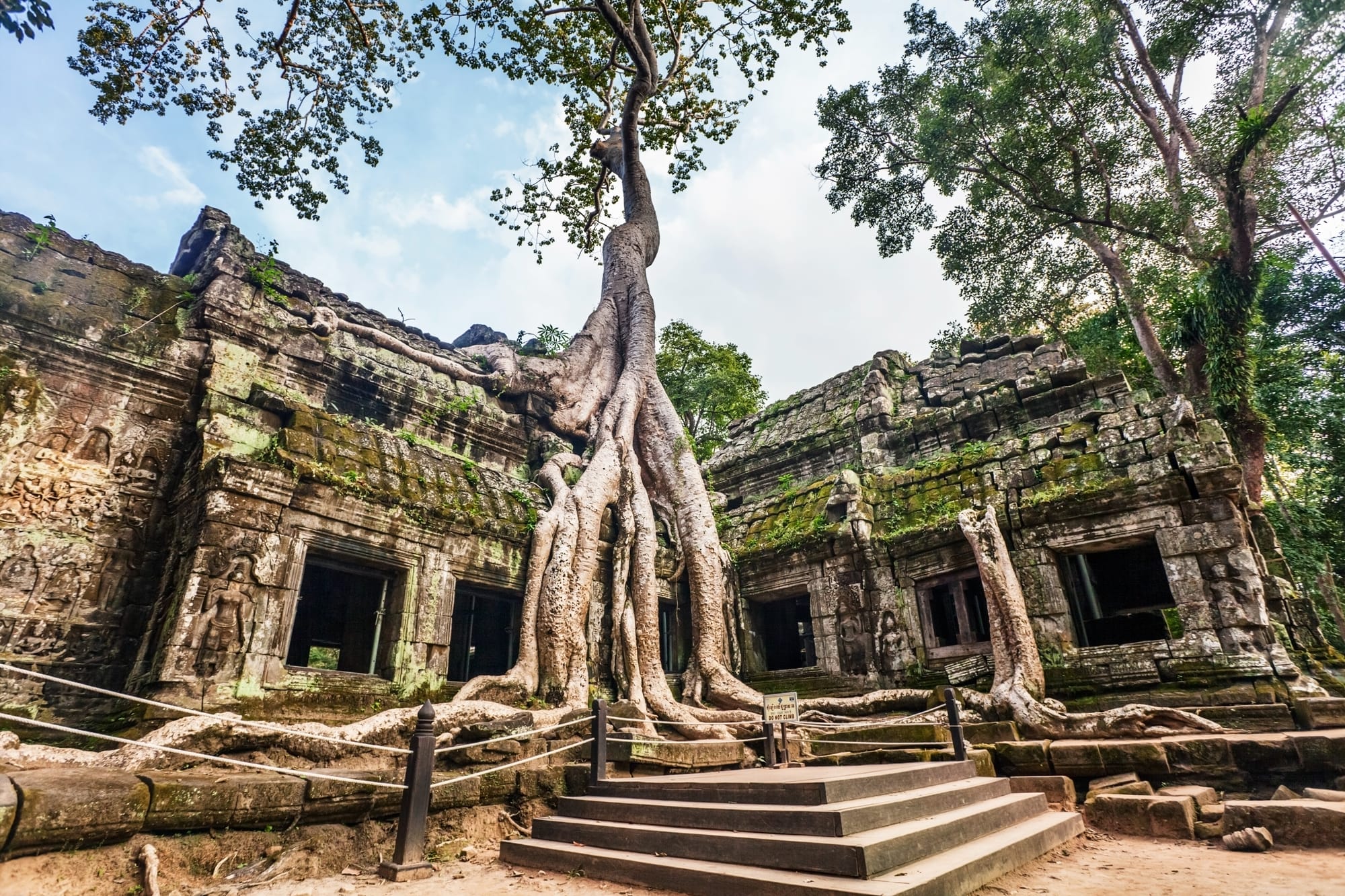In Angkor are the ruins of Khmer temples, built between the 9th and 13th centuries, lost in the heart of the rainforest north of the Tonle Sap. Step back in time in this medieval city, half buried under the jungle, offering a true journey through history, a testimony of a forgotten civilization deep in Cambodia. ►
In Angkor are the ruins of Khmer temples, built between the 9th and 13th centuries, lost in the heart of the rainforest north of the Tonle Sap. Step back in time in this medieval city, half buried under the jungle, offering a true journey through history, a testimony of a forgotten civilization deep in Cambodia.
Under successive reigns, the city grew rapidly from the 9th to the 15th century; this period is considered the golden age of the country.
Angkor bears witness to the Khmer Empire in cultural and administrative terms and has many monuments reflecting its golden age, such as temples, palaces, and pools. Among the hundreds of these monuments, the most important and popular are Angkor Wat, Bayon, Ta Prohm, Preah Khan, and Banteay Srei.
To get to the temples, go to Siem Reap, located 7km away, which you can access by plane.
The best time to visit the temples and Cambodia is from December to March, during the dry season. Indeed, the climate is tropical; it is hot all year round, with a rainy season from May to mid-November, especially during August, September, and October, when the rains are at their maximum in Angkor.
Under the orders of Jayavarman VII, were built massive temples such as that of Preah Khan, dedicated to the king and made in the 12th century; it means holy sword and refers to the sword he would have used to defeat the invader\'s Chams. It was used as a Buddhist monastery and as a place of education.
Preah Khan is a popular place for tourists and is considered one of the finest examples of Khmer architecture. It has several stone buildings, vaulted galleries, corridors, courtyards, and beautiful ornate doors. The walls are decorated with sculptures of snakes and nagas, protective guardians in Khmer mythology.
Also, the Bayon is famous for its stone towers, each adorned with four giant carved faces. The faces are considered representations of the Buddha or the king himself, and their peaceful, smiling expression has become one of the most recognizable symbols of the culture.
He also built Ta Prohm, another Buddhist temple developed in the 12th century during the reign of King Jayavarman VII, to honor his mother.
What is particularly noteworthy is the effect of nature on the ruins, with large trees that have grown through the walls and towers, creating a mysterious and magical atmosphere.
For movie fans, the place is also known to have appeared in some scenes of Tomb Raider, with Angelina Jolie in the lead role.
A visit to be noticed is Angkor Wat, considered one of Southeast Asia's most important archaeological sites.
Built-in the 12th century during the reign of Suryavarman in honor of the Hindu god Vishnu, it is the largest religious temple in the world. It is also known for its detailed carvings, representing Hindu and Buddhist mythology scenes. A sizeable outer wall surrounds the place and is accessible by a stone bridge topped by stone lions.
The shape of its dome makes it even more unique, as it is shaped like a lotus.
The archaeological site of Angkor is one of the most significant and fascinating UNESCO World Heritage Sites since 1992. The most recommended means of transportation from one temple to another is the tuk-tuk, which offers an unforgettable and unique experience.
To fully appreciate the beauty of the Angkor area, it is recommended to take a hot air balloon or helicopter ride. At sunset, the panoramic view of the temples and ruins of Angkor offers a breathtaking spectacle. ◄
